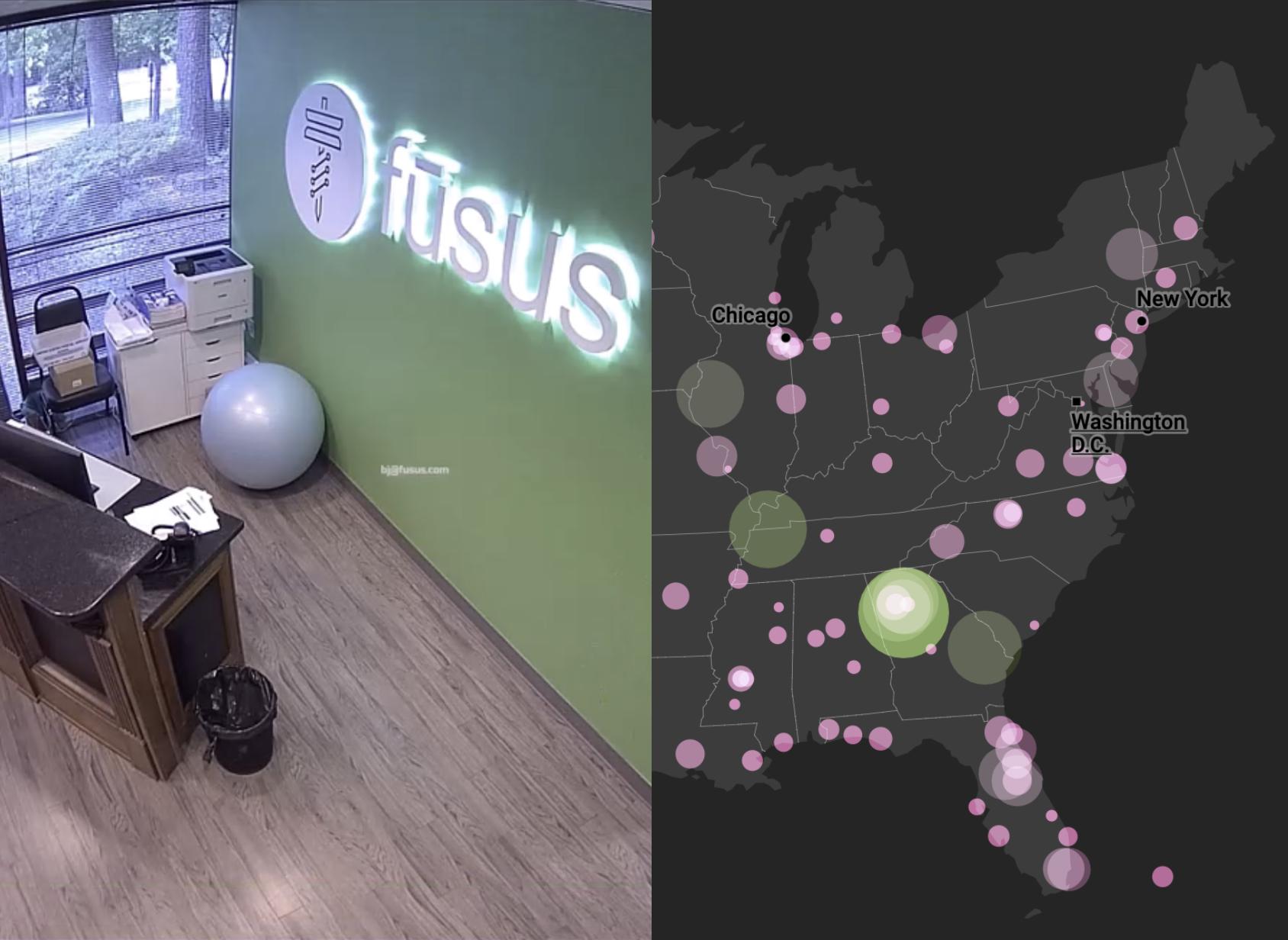More than a hundred local police departments, sheriff’s offices, and cities have set up an AI-powered camera system, with nearly 200,000 connected cameras belonging to residents and businesses around the country able to provide “direct access” to law enforcement, according to a 404 Media analysis of a set of scraped data.
Although likely not fully comprehensive, the data provides the clearest picture yet of the growing popularity of Fusus, a company and platform that qualitatively changes what surveillance cameras mean for a town’s residents and public agencies. Fusus turns dumb cameras into smart ones, with object recognition capabilities for items, people, and specific vehicles; it funnels usually siloed camera feeds into one central location for law enforcement, and lets agencies survey what surveillance coverage they have across their jurisdiction.
“Whether it’s a drone, a traffic camera, a private cell phone video, or a building security camera, FUSUS can extract the live video feed and send it to our Intelligence Center and officers in the field,” one memorandum 404 Media previously obtained reads.
404 Media is now publishing an interactive map based on the newly obtained data, letting readers see if their own local police department or similar agency has a Fusus system.
You can download the dataset here.
404 Media obtained the data from a researcher, who also described themselves as a hacktivist. This researcher identified a public-facing Fusus API, and determined how to look up the different camera stats for specific agencies. Obtaining the stats for a Fusus customer requires knowing the customer’s specific subdomain—“cityofmiamipd” for the Miami Police Department, for example—and then using that to visit a particularly crafted URL. To build a list of subdomains, the researcher said they used multiple search engines to identify Fusus clients, in many cases using sites created by Fusus which ask local residents to register or integrate the cameras. These include sites like “Help Keep Orland Park Safe.” By themselves, these sites only provide information about one particular Fusus customer. But scraped en masse, and a clearer picture of Fusus’ scale starts to emerge.
As for why they scraped this data and shared it, the researcher said they read 404 Media’s previous coverage of Fusus and were “disgusted by the technology and scale of their operation. The surveillance-capitalist dream. And they are so cheeky—building the panopticon but scaring citizens into paying to be part of it.” 404 Media gave the researcher anonymity to protect them from retaliation.
Beryl Lipton, investigative researcher at activist organization the Electronic Frontier Foundation (EFF), and who has researched Fusus, told 404 Media in an email “This dataset is the most detailed record of Fusus-integrated cameras I’ve seen. It makes clear that these systems are using hundreds of thousands of public and private cameras to blanket huge swaths of our cities, particularly those in the Southeast, with the capacity for constant surveillance.”
“In these cities where police have live camera access through this type of technology, transparency around its use is crucial. It’s important that residents understand that this is not simply a registry of cameras for law enforcement reference but an extensive system of data collection that requires clear policies and processes for use, data retention, and audits,” she added.
The data includes several different fields for each agency: “registered” cameras are those that individual residents or business owners have informed law enforcement about, so if an incident does happen, investigators can reach out and ask for assistance retrieving footage if necessary. “Integrated” cameras are the next step, in which residents give law enforcement “direct access” to their camera feed, as Fusus’ own documentation phrases it. Integration requires the installation of a small piece of hardware, which can also add the AI-capabilities to the camera. These devices can cost between $350 and $7,300. “Max” cameras is the upper limit that the agency’s Fusus plan allows for. Agencies can pay between $25,000 to $100,000 a year, depending on the number of cameras and capabilities they want.
From the perspective of some law enforcement agencies that have used Fusus, the technology is a net positive. One former law enforcement official said on Fusus’ own podcast that the cameras have led to quicker results. A current official said on the same podcast that the Fusus system has resulted in apprehensions.
Fusus did not respond to multiple requests for comment.


